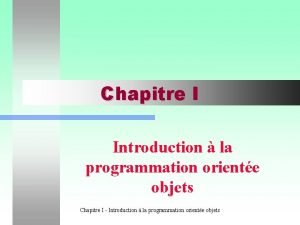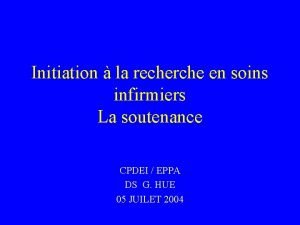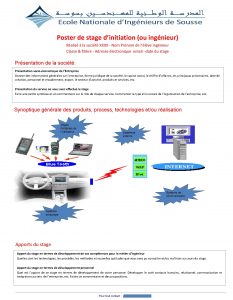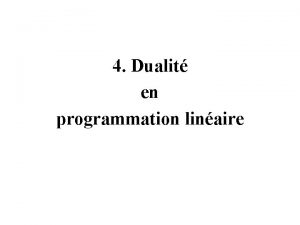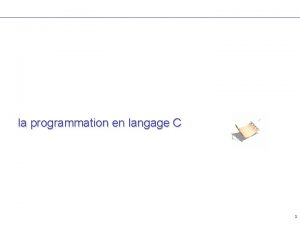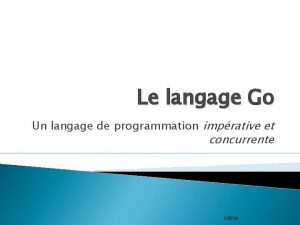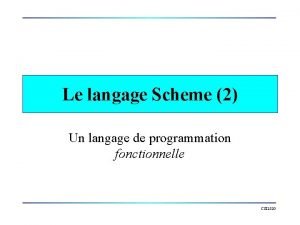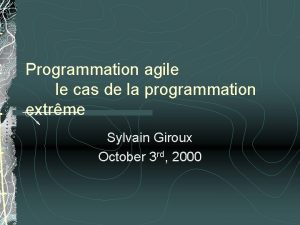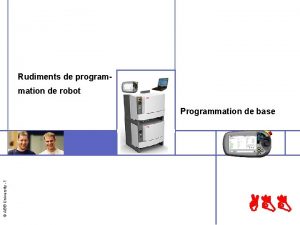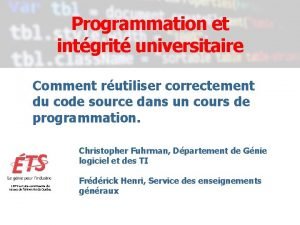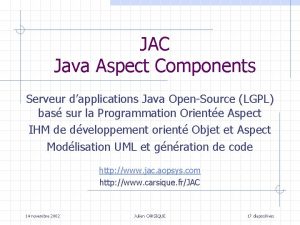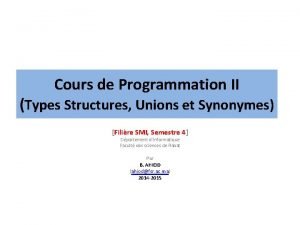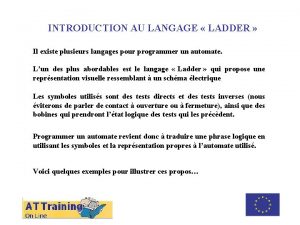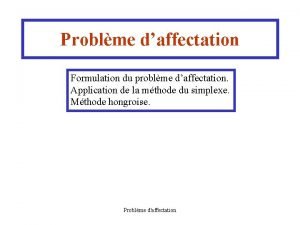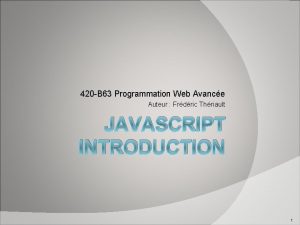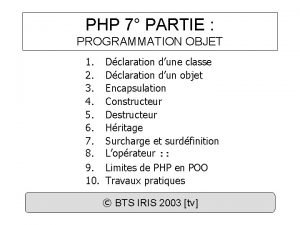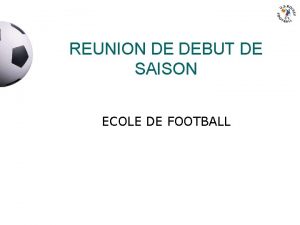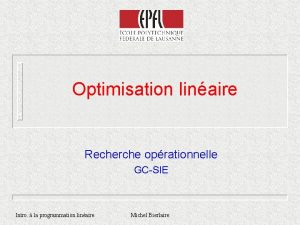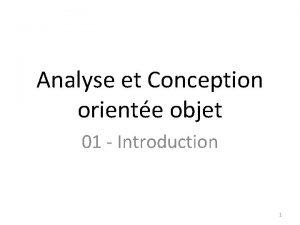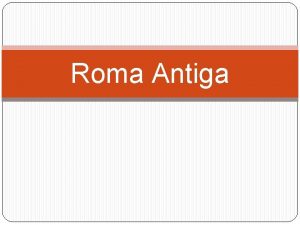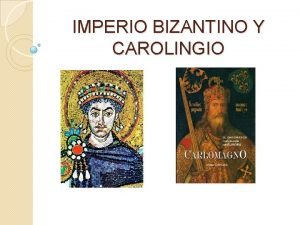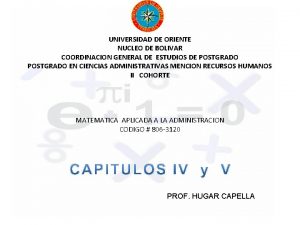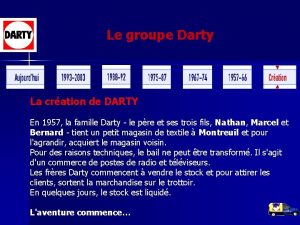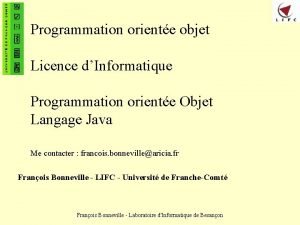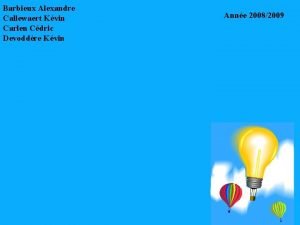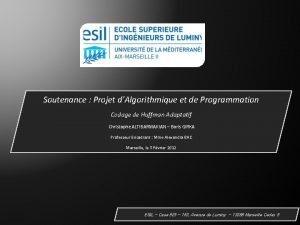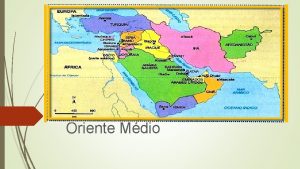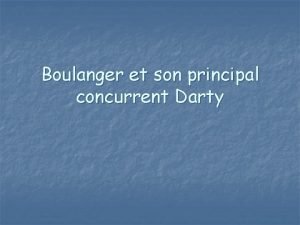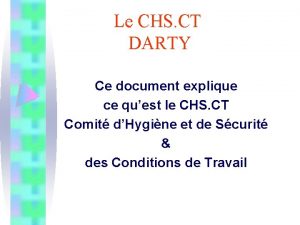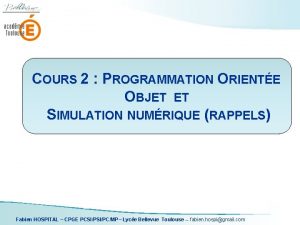Soutenance de stage Programmation Oriente motion Kvin Darty

![Introduction �Méthode de programmation ◦ Résolution de problème [Hart&al 68] ◦ Informatique affective [Darwin&al. Introduction �Méthode de programmation ◦ Résolution de problème [Hart&al 68] ◦ Informatique affective [Darwin&al.](https://slidetodoc.com/presentation_image_h/a5da054952351668f577e660b1b1da11/image-2.jpg)









![État de l’art : résolution de problème �Normatif ◦ Exploration : A* [Hart&al 68] État de l’art : résolution de problème �Normatif ◦ Exploration : A* [Hart&al 68]](https://slidetodoc.com/presentation_image_h/a5da054952351668f577e660b1b1da11/image-12.jpg)
![État de l’art : résolution de problème �Normatif ◦ Exploration : A* [Hart&al 68] État de l’art : résolution de problème �Normatif ◦ Exploration : A* [Hart&al 68]](https://slidetodoc.com/presentation_image_h/a5da054952351668f577e660b1b1da11/image-13.jpg)
![État de l’art : informatique affective �Mémoire ◦ Mémoire à long terme [Atkinson&Shiffrin 68] État de l’art : informatique affective �Mémoire ◦ Mémoire à long terme [Atkinson&Shiffrin 68]](https://slidetodoc.com/presentation_image_h/a5da054952351668f577e660b1b1da11/image-14.jpg)
![État de l’art : informatique affective �Mémoire ◦ Mémoire à long terme [Atkinson&Shiffrin 68] État de l’art : informatique affective �Mémoire ◦ Mémoire à long terme [Atkinson&Shiffrin 68]](https://slidetodoc.com/presentation_image_h/a5da054952351668f577e660b1b1da11/image-15.jpg)












![Bibliographie (1/2) � � � [Anderson&al. 04] Anderson, J. R. and Bothell, D. and Bibliographie (1/2) � � � [Anderson&al. 04] Anderson, J. R. and Bothell, D. and](https://slidetodoc.com/presentation_image_h/a5da054952351668f577e660b1b1da11/image-28.jpg)
![Bibliographie (2/2) � [Levenshtein 66] Levenshtein, V. I. Binary codes capable � of correcting Bibliographie (2/2) � [Levenshtein 66] Levenshtein, V. I. Binary codes capable � of correcting](https://slidetodoc.com/presentation_image_h/a5da054952351668f577e660b1b1da11/image-29.jpg)

- Slides: 30

Soutenance de stage Programmation Orientée Émotion Kévin Darty 7 septembre 2011 Responsable : Nicolas Sabouret
![Introduction Méthode de programmation Résolution de problème Hartal 68 Informatique affective Darwinal Introduction �Méthode de programmation ◦ Résolution de problème [Hart&al 68] ◦ Informatique affective [Darwin&al.](https://slidetodoc.com/presentation_image_h/a5da054952351668f577e660b1b1da11/image-2.jpg)
Introduction �Méthode de programmation ◦ Résolution de problème [Hart&al 68] ◦ Informatique affective [Darwin&al. 02] �Émotion ◦ Cadre de programmation

Plan �Classe de problème �États de l’art ◦ Résolution de problème ◦ Affective computing �Modèle �Implémentation �Évaluation �Conclusion �Bibliographie

Classe de problème

Classe de problème �Sans connaissance du but

Classe de problème �Sans connaissance du but �Multi objectifs

Classe de problème �Sans connaissance du but �Multi objectifs �Dynamique

Classe de problème �Sans connaissance du but �Multi objectifs �Dynamique �Ressources limitées

Classe de problème �Sans connaissance du but �Multi objectifs �Dynamique �Ressources limitées �Temps limité

Classe de problème �Sans connaissance du but �Multi objectifs �Dynamique �Ressources limitées �Temps limité �Partiellement observable

Classe de problème �Sans connaissance du but �Multi objectifs �Dynamique �Ressources limitées �Temps limité �Partiellement observable �Complexe
![État de lart résolution de problème Normatif Exploration A Hartal 68 État de l’art : résolution de problème �Normatif ◦ Exploration : A* [Hart&al 68]](https://slidetodoc.com/presentation_image_h/a5da054952351668f577e660b1b1da11/image-12.jpg)
État de l’art : résolution de problème �Normatif ◦ Exploration : A* [Hart&al 68] �Optimum / Temps limité ◦ Planification : Graph. Plan [Blum&Furst 97] �Base de règle / Dynamique / Problème abstrait
![État de lart résolution de problème Normatif Exploration A Hartal 68 État de l’art : résolution de problème �Normatif ◦ Exploration : A* [Hart&al 68]](https://slidetodoc.com/presentation_image_h/a5da054952351668f577e660b1b1da11/image-13.jpg)
État de l’art : résolution de problème �Normatif ◦ Exploration : A* [Hart&al 68] �Optimum / Temps limité ◦ Planification : Graph. Plan [Blum&Furst 97] �Base de règle / Dynamique �Descriptif ◦ Comportement : Free. Flow. Hierarchies [Tyrrell 93] �Compromis / Problème abstrait ◦ Animat : MHi. CS [Robert&Grillot 03] �Adaptatif / Complexe ◦ Architecture psychologique : ACT-R [Anderson&al. 04] �Humain / Méthode simple
![État de lart informatique affective Mémoire Mémoire à long terme AtkinsonShiffrin 68 État de l’art : informatique affective �Mémoire ◦ Mémoire à long terme [Atkinson&Shiffrin 68]](https://slidetodoc.com/presentation_image_h/a5da054952351668f577e660b1b1da11/image-14.jpg)
État de l’art : informatique affective �Mémoire ◦ Mémoire à long terme [Atkinson&Shiffrin 68] �Vécu mémorisation apprentissage possible ◦ Mémoire de travail [Atkinson&Shiffrin 68] [Miller 56] �Concentration Minimise l’espace de recherche
![État de lart informatique affective Mémoire Mémoire à long terme AtkinsonShiffrin 68 État de l’art : informatique affective �Mémoire ◦ Mémoire à long terme [Atkinson&Shiffrin 68]](https://slidetodoc.com/presentation_image_h/a5da054952351668f577e660b1b1da11/image-15.jpg)
État de l’art : informatique affective �Mémoire ◦ Mémoire à long terme [Atkinson&Shiffrin 68] �Vécu mémorisation apprentissage possible ◦ Mémoire de travail [Atkinson&Shiffrin 68] [Miller 56] �Concentration Minimise l’espace de recherche �Émotion ◦ Catégoriel [Plutchik 80] ◦ Dimensionnel [Mehrabian&Russell 74]

Conclusion �Modélisation de la classe de problème ? �Résolution généralisée de problèmes ? �Heuristiques émotionnelles ? �Réduire la tâche du programmeur ? Ø Séparation problème / solution Ø Niveau d’abstraction Ø Solveur Orienté Émotion automatisé Ø Environnement de programmation aisé

Modèle (1/4) : architecture

Modèle (2/4) : Environnement �

Modèle (3/4) : Solution �

Modèle (4/4) : Solveur �

Implémentation (1/2)

Implémentation (2/2)

Évaluation (1/4) : Labyrinthe �

Évaluation (2/4) : Conclusion �Problème ◦ Dynamique ◦ Partiellement observable ◦ A temps limité �Séparation problème / solution �Heuristiques émotionnelles �Comportements adaptés �Mise en œuvre rapide

Évaluation (3/4) : Protocole � Testeurs humains � Similitudes sur une même instance de labyrinthe ◦ ◦ ◦ � Taux de réussite Séquences d’actions [Levenshtein 66] Nombres de tours Nombres d’actions Trésors récoltés Tests ◦ 2 configurations : avec/sans monstres ◦ 30 personnes X 4 instances de labyrinthe

Évaluation (4/4) : Attentes q Taux de réussite proches q Longueurs de séquence et nombres de tour équivalents q Comportements similaires § Logique : parcours § Émotionnel : réaction aux perceptions par un choix de comportement semblable

Conclusion & perspectives Modélisation de la classe de problème Tache réduite : Séparation problème / solution Appraisal automatisé Heuristiques émotionnelles indépendantes du problème Comportement adapté du solveur Réaction par émotion Concentration via les filtres et la WM Utilisation stricte de la mémoire Évolution de l’importance d’une perception Apprentissage du critère de dominance Application du protocole d’évaluation
![Bibliographie 12 Andersonal 04 Anderson J R and Bothell D and Bibliographie (1/2) � � � [Anderson&al. 04] Anderson, J. R. and Bothell, D. and](https://slidetodoc.com/presentation_image_h/a5da054952351668f577e660b1b1da11/image-28.jpg)
Bibliographie (1/2) � � � [Anderson&al. 04] Anderson, J. R. and Bothell, D. and Byrne, M. D. and Douglass, S. and Lebiere, C. and Qin, Y. An integrated theory of the mind. Psychological review, � vol. 111. 4: 1036, 2004. [Atkinson&Shiffrin 68] Atkinson, R. C. and Shiffrin, R. M. Human memory: A proposed system and its control processes. The psychology of learning and motivation: � Advances in research and theory, vol. 2: 89 -195, 1968. [Baars&Franklin 09] Baars, B. J. and Franklin, S. Consciousness is computational: The LIDA model of � global workspace theory. International Journal of Machine Consciousness, vol. 1: 23 -32, 2009. [Baars 05] Baars, B. J. Global workspace theory of consciousness: toward a cognitive neuroscience of � human experience. Progress in brain research, vol. 150: 45 -53, 2005. � [Batra&Holbrook 90] Batra, R. and Holbrook, M. B. Developing a typology of affective responses to advertising. Psychology and Marketing, vol. 7. 1: 11 -25, � 1990. � [Blum&Furst 97] A. Blum et M. Furst. Fast Planning Through Planning Graph Analysis. Artificial Intelligence, 90: 281 -300, 1997. � [Bonnet&Geffner 98] Bonnet, B. and Geffner, H. HSP: Heuristic search planner. Citeseer, 1998. � [Caplat 02] Caplat, G. Modélisation cognitive résolutions � de problèmes, Presses polytechniques et universitaires romandes, 2002. � [Conklin 06] Conklin, J. Wicked problems & social � complexity. Citeseer, 2006. � The expression of the emotions in man and animals, Oxford University Press, 2002. [Do&Kambhampati 01] Do, M. B. and Kambhampati, S. Sapa: A domain-independent heuristic metric temporal planner. Proceedings of the 6 th European Conference on Planning, 190 -120, 2001. [Edell&Burke 87] Edell, J. A. and Burke, M. C. The power of feelings in understanding advertising effects. The Journal of Consumer Research, vol. 14. 3: 421 -433, 1987. [Fikes&Nilsson 71] Fikes, R. E. and Nilsson, N. J. STRIPS: A new approach to the application of theorem proving to problem solving. Artificial intelligence, vol 2. 3/4: 189 -208, 1971. [Greeno 78] Greeno, J. G. Natures of problem-solving abilities. Lawrence Erlbaum, 1978. [Guillot&Daucé 03] Guillot, A. & Daucé, E. Approche dynamique de la cognition artificielle. Hèrmes Scienes Publications, 2003. [Hart&al 68] Hart, P. E. , Nilsson, N. J. et Raphael, B. A formal basis for the heuristic determination of minimum cost paths. Systems Science and Cybernetics, IEEE Transactions on, 4: 100 -107, 1968. [Hoffmann&Nebel 01] Hoffmann, J. et Nebel, B. FF: The fast-forward planning system. Journal of Artificial Intelligence Research, 14. 1: 253 -302, 2001. [James&al. 81] James, W. and Burkhardt, F. and Bowers, F. and Skrupskelis, I. K. The principles of psychology, Harvard University Press, vol. 12, 1981. [Lazarus&Folkman 96] Lazarus, R. & Folkman, S. Stress,
![Bibliographie 22 Levenshtein 66 Levenshtein V I Binary codes capable of correcting Bibliographie (2/2) � [Levenshtein 66] Levenshtein, V. I. Binary codes capable � of correcting](https://slidetodoc.com/presentation_image_h/a5da054952351668f577e660b1b1da11/image-29.jpg)
Bibliographie (2/2) � [Levenshtein 66] Levenshtein, V. I. Binary codes capable � of correcting deletions, insertions, and reversals. Soviet Physics Doklady, vol. 10, 8: 707 -710, 1966. [Russell 80] Russell, J. A. A circumplex model of affect. Journal of personality and social psychology, vol. 39. 6: 1161, 1980. � [Mehrabian&Russell 74] Mehrabian, A. and Russell, J. A. � An approach to environmental psychology. the MIT Press, 1974. � [Miller 56] Miller, G. A. The magical number seven, plus or minus two: some limits on our capacity for processing information. Psychological review. Vol 63. 2, 81, 1956. � [Schmeichel&al. 08] Schmeichel, B. J. and Volokhov, R. N. and Demaree, H. A. Working memory capacity and the self -regulation of emotional expression and experience. Journal of Personality and Social Psychology, vol. 95. 6: 1526, 2008 � [Park&Koelling 89] Park, Y. B. and Koelling, C. P. An interactive computerized algorithm for multicriteria vehicle routing problems. Computers & Industrial Engineering, vol. 16. 4: 477 -490, 1989. � [Plutchik 80] Plutchik, R. Emotion: A psychoevolutionary synthesis. Harper & Row New York, 1980. � [Rittel&Webber 73] Rittel, H. W. J. and Webber, M. M. Dilemmas in a general theory of planning. Policy sciences, 4. 2: 155 -169, 1973. � [Robert&Grillot 03] Robert, G. and Guillot, A. MHi. CS, a modular and hierarchical classifier systems architecture for bots. 4 th International Conference on Intelligent Games and Simulation (GAME-ON’ 03), 140 -144, 2003. � [Rosenblatt&Payton 89] Rosenblatt, J. K. & Payton, D. W. A fine-grained alternative to the subsumption architecture for mobile robot control. IEEE/INNS International Joint Conference on Neural Networks, 317 -323, 1989. � [Rosenbloom&al. 93] Rosenbloom, P. S. & Laird, J. & Newell, A. The SOAR papers: Research on integrated intelligence. Mit Press Cambridge, vol. 1, 1993. [Tyrrell 93] Tyrrell, T. The use of hierarchies for action selection, Adaptive Behavior, vol. 1. 4: 387, 1993.

Questions
 Programmation procédurale vs orienté objet
Programmation procédurale vs orienté objet Masternaut darty
Masternaut darty Plan soutenance de stage
Plan soutenance de stage Poster soutenance de stage
Poster soutenance de stage Theoreme des ecarts complementaire
Theoreme des ecarts complementaire Programmation
Programmation Go langage de programmation
Go langage de programmation Langage scheme
Langage scheme Programmation lineaire
Programmation lineaire Programmation agile
Programmation agile Robtarget
Robtarget Programmation
Programmation Java aspect
Java aspect énuméré synonyme
énuméré synonyme Problème de transport en programmation linéaire
Problème de transport en programmation linéaire Ladder elements
Ladder elements Problme
Problme Webavance
Webavance Programmation objet php
Programmation objet php Programmation annuelle école de football
Programmation annuelle école de football Programmation lineaire
Programmation lineaire Cartina vicino oriente antico
Cartina vicino oriente antico Conception orienté objet
Conception orienté objet Gambardella
Gambardella Itlica
Itlica Oriente y occidente mapa
Oriente y occidente mapa Regione del vicino oriente
Regione del vicino oriente Primeras civilizaciones del cercano oriente
Primeras civilizaciones del cercano oriente Centro zonal sur oriente barranquilla
Centro zonal sur oriente barranquilla Maghnae
Maghnae Universidad de oriente nucleo bolivar
Universidad de oriente nucleo bolivar
